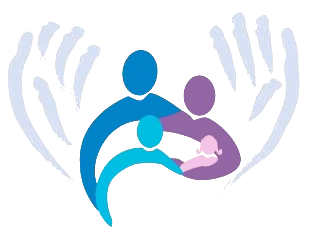Archive for February 2023
Hydration For Health
What is a way that you can immediately feel better, mentally and physically? The answer is simple and natural: drink more water.
Staying hydrated is essential for maintaining good health and overall well-being. The human body is made up of about 60% water, and water is needed for numerous bodily functions, including regulating body temperature, carrying nutrients and oxygen to cells, and removing waste products. Dehydration can lead to a range of negative health outcomes, including fatigue, headaches, constipation, and kidney problems. It is important to drink enough water and fluids throughout the day to stay properly hydrated. The amount of water a person needs can vary based on factors such as age, activity level, and climate. It is recommended that adults drink at least eight 8-ounce glasses of water per day. Other sources of fluids, such as herbal tea or fruit juice, can also contribute to overall hydration. Staying hydrated can help to maintain physical and mental health, and is an important aspect of self-care.
As practitioners and proponents of holistic health, there are few things we can recommend more highly than getting your daily dose of H2O. What to expect from consuming your daily recommended amount of water (1 quart per 50 pounds of body weight per day)
- Clearer mental function
- Better physical performance
- Better metabolic and digestive function
- Healthier skin
- Lubricated joints and healthier muscles
- Better disposal of toxins
- Cools down your body
The list just goes on. However, throughout history, humans have been focusing on inventing tasty alternatives that distract us from consuming water. Water is often deemed to be too simple and bland in flavor. Perhaps this makes it unattractive: more people than ever reach for coffee, soda, and energy drinks which contain less hydrating qualities, but more sugar and caffeine which can wreak havoc on your immune system.
Ways to drink more water:
- Purchase a water bottle that you like and spruce it up with stickers. Make it something that you take around with you in your bag, like a best friend. Drink from it regularly and before you know it, it will be ingrained in your brain: you won’t feel the same without it by your side.
- Flavor your water naturally. Fill a pitcher with water and slice up fruit or citrus to put in it. Keep it in your fridge for a cold, refreshing treat.
When your body is low on water, your organs are forced to ration what they have, meaning they don’t function optimally. Make sure you are properly hydrated during the day and you will feel better, it’s a promise. Making changes to your diet to effect improvement in your well-being can be overwhelming. We urge you not to take this burden entirely on yourself, we are here to help! Give our office a call and schedule an appointment today.
Myofascial Pain Syndrome
Prolonged Tension That Causes Pain
Myofascial pain syndrome is a chronic pain disorder characterized by pressure in sensitive points in the muscles called trigger points. In MPS, the stimulus point of pain is not where symptoms are felt; rather, the pain is referred to other points in the body. For example, a point of tension in the back could be causing pain to be referred to your head and you may think you are having chronic headaches. Many people are familiar with muscle strain or prolonged tension that causes pain, but MPS is unique because the pain will persist and, in many cases, worsen. Fortunately, MPS responds well to conservative treatment modalities, of the kind we offer.
Symptoms of MPS include:
- Deep pain in a muscle
- Pain that gets worse with time, despite rest or treatment
- Tenderness in the muscles
- Referred pain
- Difficulty sleeping because of pain
Myofascial release and trigger point therapy are two modalities we utilize to help people suffering from myofascial pain syndrome.
- Trigger point therapy utilizes cycles of pressure and releases from the chiropractor’s fingerprints that get into the knots and release pain. While it is not the most comfortable form of massage, we follow up with a more relaxing hands-on treatment that helps increase circulation in the area, bringing oxygen and vital nutrients.
- Myofascial release treats the problem similarly by relaxing the muscles, stimulating the stretch reflex in the affected muscle, and improving blood and lymph circulation.
These are minimally invasive techniques that can help you find serious release from myofascial pain syndrome. Furthermore, we can show you ways to target trigger points from home or in the office so that you can help yourself next time the pain flares up.
Find your balance of mood
Mood swings are a common experience that can reflect changes in age and lifestyle. They can seem sudden and extreme, but there is often an underlying reason behind them. Stress, diet, exercise, and other lifestyle factors can all contribute to mood swings and create an imbalance in the body and mind.
As we age, our bodies and minds face increasing pressures that can make it harder to achieve a state of equilibrium. However, it’s possible to address these imbalances naturally, without relying on pharmaceuticals. Chiropractic care can help correct subluxation and regulate the nervous system, which is the primary means of communication between the brain and body. By focusing on key lifestyle factors like diet, exercise, sleep, and stress management, we can work to bring the body and mind back into balance.
If you’re experiencing mood swings and would like to explore natural ways to address them, our office is here to help. Contact us today to schedule an appointment and start coordinating an action plan for achieving greater health and well-being.
Unavoidable Scar Tissue Has A Fix
Scar tissue is an unavoidable part of the body’s healing process, after traumatic injury, surgery, or even as a response to repetitive micro-traumas (think scar tissue building up in the fingers after years of typing). Much like inflammation, another natural healing response, scar tissue can accumulate to a point where it inhibits normal functioning and causes pain and stiffness. The main problem is that scar tissue is, by some estimates, only 60% as elastic as the tissue it replaces, meaning that the material itself is inherently stiffer. When left unchecked, scar tissue can proliferate and adhere to healthy tissue in the surrounding area, which can restrict the normal range of motion, becoming especially problematic when the area in question is a joint that requires regular movement.
The happy part of this story is that chiropractic is a modality that seems almost tailor-made for combating scar tissue accumulation. At our office, we utilize modalities such as the Graston Technique, Active Release Technique, and Myofascial Release to break up scar tissue and prevent it from accumulating and interfering with your way of being. Furthermore, scar tissue can actively pull the body, in particular the back, out of balance and we want to prevent this from happening. Trigger point therapy and simple massage techniques can get deep into the tissues and dissipate the scar tissue.
If scar tissue build-up has you in its grips, give our office a call and schedule an appointment so we can start you on a path toward healing today!



